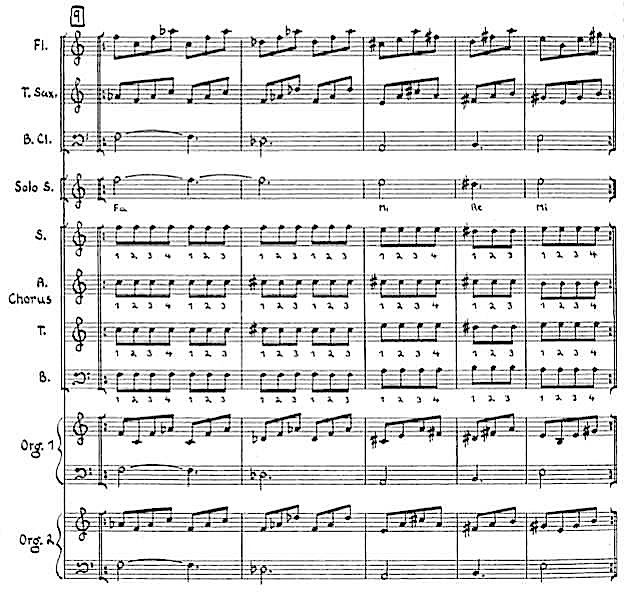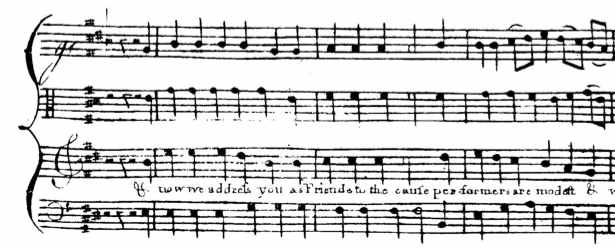I haven’t blogged about Alex Ross’s The Rest Is Noise simply because I hate being one of a crowd, and if someone else is saying the things I would say, I have little incentive to say them myself. But I find myself rather delighted by the mini-controversy of Alex getting carped at by a couple of European critics on British radio, as detailed at Sequenza 21 (you can get a link there if you want to hear the original radio program, I found it difficult to operate). That the European critics’ arguments are so pathetically, blusteringly weak is the surest sign yet of the strength of Alex’s book.
One of them finds it unfathomable that Copland gets more pages of the book than Debussy and Ravel put together. Hmmm… well, let’s see, Debussy lived from 1862 to 1918, Ravel from 1875 to 1937, and Copland from 1900 to 1990, and if your project is to chart the rising and falling course of modernism after Strauss’s Salomé (1905) up to the end of the century, it looks reasonable to me that Copland put a lot more of his productive years into that era than… well, than Debussy and Ravel put together. (For that matter, the kneejerk assumption that either Debussy or Ravel had more impact on the direction of music than Copland strikes me as old-fashioned and in need of its own defense at this point.) Another complains because Ralph Vaughan Williams is not presented as a major figure. To each his own. Another considers that Alex’s bleak assessment of post-Stockhausen German music is flatly contradicted by the liveliness of the current scene in Berlin.
Well, I do hear a lot of good things about Berlin over the past several years, partly because a thousand American musicians seem to be over there. But the context of Alex’s discussion was German music of the 1980s and ’90s, of which he has this to say (redundant, because I know you’ve already read it):
…the emergence of the new Germany as the dominant player in the European Union failed to distract the country’s composers from their wary brooding over the past; indeed, Germans and Austrians seemed more conscious than ever before of the “danger of resembling tonality,” as Schoenberg once put it. Sixty year after the Wagner-loving Hitler killed himself in Berlin, pundits could still be heard declaring that clear-cut repetition of material or a nonironic use of triads betrayed a fascist mentality…. [T]he mantle of greatness fell on Helmut Lachenmann, who has said, “My music has been concerned… with the exclusion of what appears to me as listening expectations performed by society.” One analyst approvingly notes that Lachenmann’s work is “uncontaminated” by the world around it….
…[M]uch contemporary music in Austria and Germany seems constricted in emotional range… The great German tradition, with all its grandeurs and sorrows, is cordoned off, like a crime scene under investigation.
Upon first reading the book, I had written to Alex and singled out this passage for praise. Not only does the description perfecly capture my impression of German composing culture in the period 1980-2000 – more significantly, it jives exactly with what I’ve been told about that scene by young German and Dutch composers who have left or avoided the scene to escape it. If you hold up a mirror to a people and they say, “Don’t make me look like that,” the only response possible is, “Then don’t look like that.” I do get a sense that things have been changing rapidly in Germany and Austria in the last several years, but the 21st Century is not the subject of Ross’s book. As commonly noted, it says “Twentieth Century” right on the cover, and its European critics have had to attack by charging him with having unfairly omitted the 19th and 21st.
One point brought up in the blogosphere in Ross’s defense is that The Rest Is Noise is a narrative, not a music history text. As someone who has argued for the primacy of subjective narrative in musicology, I see this as something more than a defense. Were I to teach a general 20th-century course, I could easily imagine using The Rest Is Noise as my textbook. It would give me a second subjectivity to use as a foil to my own, like having another professor in the classroom to argue points with, rather than duplicate my own idiosyncratic views. Plus, and not unrelatedly, it’s so readable that the students would actually read it and remember things. For similar reasons I would have loved to use Carl Dahlhaus’s wonderful 19th-Century Music in classes as an intelligently revisionist history, but Dahlhaus is over my students’ heads; he assumes the reader already knows the history he is about to refurbish. The Rest Is Noise does not have that pedagogical liability. It would be a mistake for musicologists to dismiss The Rest Is Noise on account of its frank subjectivity of viewpoint, and I don’t get the impression that American musicologists are flirting with that mistake.
It would likewise be silly, I think, or at least premature, to take this handful of logic-challenged critics as representative of European reaction in general. The show’s host, after all, praises the book highly after the others have vented their spleen. But it’s curious to see European musicians now in the position that Americans have occupied for a century, as the ones who feel marginalized and left out in the classical music dialogue. Their horror that a mere American has wrested the steering wheel of classical-music history out of their hands is palpable. It makes me want to go back and review several generations’ worth of European music books that condescended to American composers, including the recent British compendium I once wrote here about that included the blithe statement,
“It is difficult not to come to the conclusion that in terms of musical impact, and in the reflection of the wider human condition and the narrower expression of the ethos and ideas of the day, none of the American composers has yet matched their European counterparts.”
Poor Brits and Germans – they’re beginning to see what it feels like.



